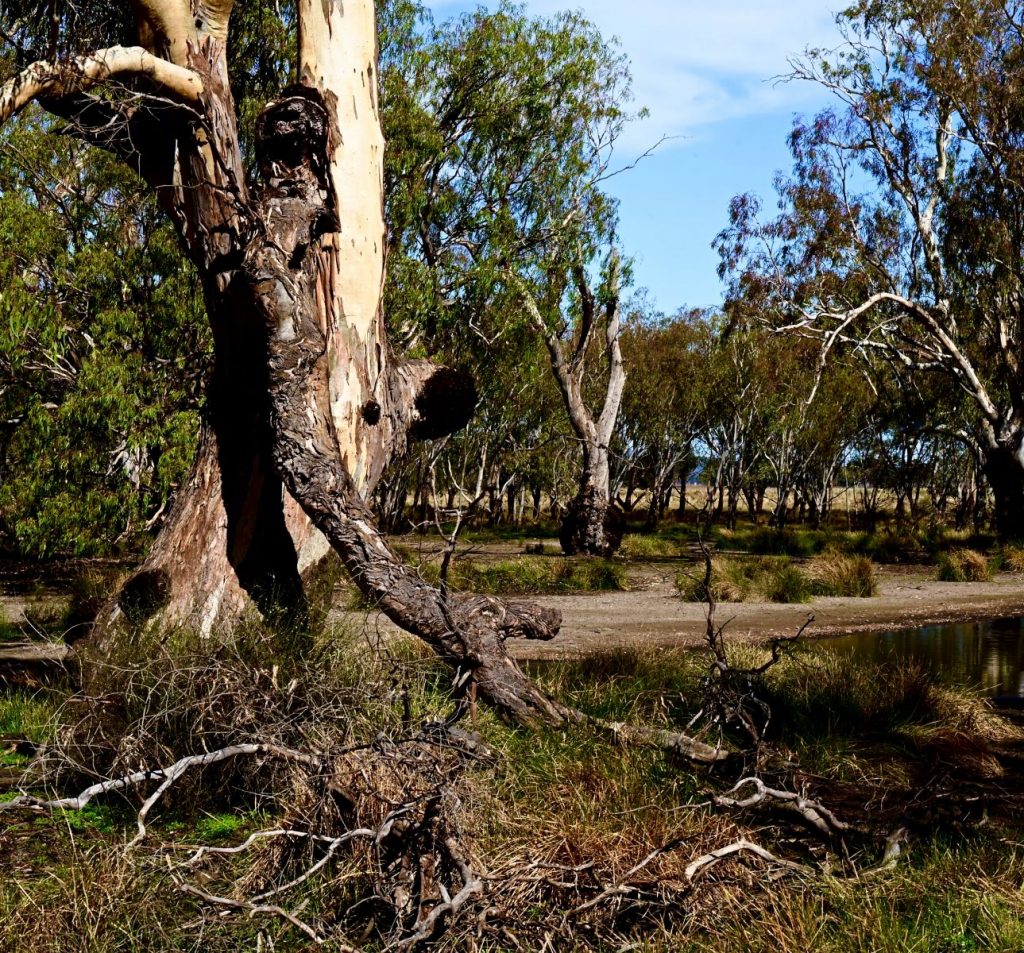
When Rob Webb spoke, it was obvious that he would never contemplate growing cotton. He wanted to preserve the land that his family had farmed for four generations since 1874. He did not wish to make the mistakes of the past.
He explained how overgrazing and poor land management has destroyed the soil’s fertility. During the Federation Drought from 1895 to 1903 the bone bare land lost many centimetres of rich soil that was blown away. He told heart rending-stories of houses and people buried in dust. Tragedies of the past were obviously seared into his heart. He had seen friends lose their farms, land and habitat destroyed and family farms eaten up by agri-corporations. Considering that Robb and Rosemary’s five children have chosen not to be farmers he might be the last Webb to farm the ‘Clearview’ property on Webb Siding Road. Angus is a doctor, Russell a nurse, Clare an occupational therapist, Adam a construction manager and Owen a commercial lawyer.
When writing to a parliamentary committee Rob wrote “In the early 1980s we experienced an horrific drought which made me realise that the continuous high stocking rate that we had practised would simply not be able to be sustained. We were forced to destock into a very depressed market which created a deal of economic hardship. Fortunately, my wife was able to continue with her teaching which allowed for some degree of financial security to be achieved.
The difficult climatic conditions during that drought provided me with an opportunity to rethink our long-term management. We planted thousands of trees in corridors in and around our property. We also set about planting 202 hectares of Old Man Saltbush. This is a hardy perennial edible shrub which provides a buffer against the wind erosion that we had experienced during the 1982 to 1983 drought.
We also set about a rehabilitation program in the 20 ha of Backwater Cowal (i.e. a swamp) on the Dappo property.”
Robb also said “We had a very changed attitude towards maintaining stock numbers. We were able to shed numbers when conditions became too severe.”
On their 600 hectares the Webbs run 1200 white Dorper ewes for ‘Saltbush lamb’ and 50 steers.
Rob Webb and his Narromine neighbour Bruce Maynard wanted to preserve their pastures and re-establish some of the natural habitat. They were not interested in using herbicides or superphosphate. Their method was to help the land recover and become sustainable. By planting deep rooted saltbushes on pasture they stabilized the soil and provided feed when the grass had been depleted. They were drought-proofing their pastures. Oldman saltbush (Atriplex nummularia) seedlings grown at Narromine Transplants were transplanted on both the Maynard and Webb properties to guarantee a sustainable future for their pastures.
Rob had previously managed the small Dappo property of 130 hectares next to his father’s ‘Clearview’ farm. He produced a range of crops including wheat, oats and barley as well as lucerne, hay, fat lambs, wool and Premier Digit seed. After his father died, he sold the Dappo farm and started afresh on his father’s farm.
On his ‘Clearview’ property he produces ‘Saltbush lamb’ and native cut foliage. The Australian floriculture industry produces high value products. Rob grows Eucalyptus macrocarpa that sells well for its large cut flowers and grey menthol-scented foliage.
Rob Webb’s farm sits over an ancient billabong that can be traced from a bend in the Macquarie River. Its remnant appears as Backwater Cowal which once flowed 80 kilometres west across the plain past Nevertire where it peters out. Ancient river gravels beneath the Macquarie flood plain soils act as aquifers for the river’s waters. Most of the swampy depressions have been transformed into arable land however some wetlands still exist. At Rob’s southern boundary he and a neighbour have restored the Cowal to form a large natural wetland where eucalyptus trees have been planted. This is a natural bird habitat with plenty of water and trees.
